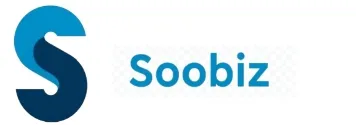A few years ago, I caught myself nervously watching a biotech ticker as FDA news dropped. The screen flashed green, then red, and my caffeine was suddenly no match for the adrenaline. Today, if you’re tracking iova stock, you know the feeling. Biotech isn’t for the faint of heart; it’s for those who want to understand not just what happens, but why and how the next quarter’s risks might become tomorrow’s rewards.
This article breaks down iova stock, Iovance Biotherapeutics so you walk away with the confidence to talk shop with analysts or colleagues. Taking complex market moves and medical breakthroughs, then explaining them so they actually make sense.
Why IOVA Stock Matters to Business Leaders in 2025
Let’s start with the big picture. Iovance Biotherapeutics (NASDAQ: IOVA) specializes in cancer immunotherapies, with its flagship product AMTAGVI targeting tough-to-treat tumors. Unlike large, diversified pharma firms, Iovance lives or dies by pipeline progress and FDA decisions, a fact that has kept iova stock volatile, but also one of biotech’s most watched stories.
-
2025 saw major swings: After disastrous Q1 results and slashed revenue guidance, the share price crashed by 44% in May. Yet, by late July, iova stock was fighting back, closing at $3.13 (July 22) after a 25% daily jump.
-
Market context: One-year price change? Down more than 69%. Five-year drop? A sobering 91%. Yet analysts still peg possible price targets as wide as $2 to $32, with some outlier projections over $30 if business execution improves.
-
Why so volatile? Small biotech shares bounce wildly based on trial data, FDA news, partnership rumors, and, sometimes, the anticipation of sector-wide regulatory shifts.
Key takeaway: If you lead or invest in innovation-driven fields, iova stock is a textbook case in risk management and high-reward potential. You don’t have to be in healthcare to apply these lessons, think about any business where one contract, customer, or product can shift fortunes overnight.
Actionable Strategies for Navigating IOVA Stock
If you want to think clearly about iova stock, skip the hype and stick to business basics. Here’s how I break it down for a junior analyst, Feynman-style:
1. Check the Financials, Focus on the Real Numbers
-
Liquidity looks healthy: The cash balance hovers around $400 million. That’s enough to survive clinical starts, even with losses mounting.
-
Sales growth: AMTAGVI, its lead product, reported $48.7 million in quarterly revenue, missing Wall Street’s mark but still contributing. The company reaffirmed a 2025 product revenue forecast of $450-$475 million, though some analysts are skeptical.
-
Net loss trend: Iovance has posted regular losses, in line with most clinical-stage and pre-profit biotech companies.
2. Know the Catalysts, What Moves the Stock
-
FDA milestones: Approval news (or rejection) swings the price by double-digit percentages. No surprise for a company with one main product in a crowded, high-stakes field.
-
Class action lawsuits and governance moves: Recent securities litigation after the Q1 tumble is a reminder—legal issues can move the price, even if the science holds up.
-
Market psychology: High-profile FDA news for peers (such as Replimune’s rejection in melanoma) spooks or excites the sector.
3. Assess the Pipeline, Long-Term Thinking
-
Product differentiation matters: Iovance’s immunotherapies target rare cancer pathways, aiming for differentiation from “me-too” drugs.
-
Expansion strategies: Management is driving international moves, aiming to launch AMTAGVI in Europe and scale up advanced therapy centers.
-
Analyst calls: Some project massive upside if commercial launches stick (price targets from $6 to $32). But low-end targets exist too, reflecting risk.
Imagine explaining to a friend, “IOVA is a bet that new cancer treatments can deliver sales, but if trials miss or the FDA holds back, the stock tanks. It’s like betting on a startup with one make-or-break product launch.”
Avoiding Common Mistakes: Biotech Investing is a High-Wire Act
Over the years, I’ve seen smart people blindside themselves with the same errors:
-
Chasing quick wins: Biotech’s big jumps lure day-traders, but ignoring long-term fundamentals usually ends badly.
-
Forgetting regulatory odds: The FDA is as much a business partner as the scientists.
-
Underestimating clinical risk: Even late-stage trials sometimes flop for reasons no one can predict.
-
Assuming all analyst targets are gospel: Models swing from $2 to $32 because reality is uncertain—always look under the hood, not just at headlines.
How to do better?
-
Track news and trial status, not just price moves.
-
Set your own time horizon and risk meter before buying in.
-
If you’re not an expert on clinical pipelines, consult one before making big bets.
Challenges for IOVA Stock And How the Company Responds
Iovance’s story isn’t just a wild chart. Here’s how the company grapples with its hurdles:
-
Market trust: Sudden guidance cuts or missed sales goals fuel skepticism. To combat this, Iovance has prioritized transparency in calls and press releases.
-
Talent retention: Recent inducement grants—with 138,190 options to new employees—look to keep key staff in the game at a low share price.
-
Capital discipline: Tight cash management means fewer secondary offerings, and the team is targeting efficiency in spending as a hedge against sector-wide funding droughts.
IOVA Stock Table: Key Metrics for Decision-Makers

Conclusion: IOVA’s Balancing Act in 2025
IOVA stock is a masterclass in biotech volatility: steep drawdowns, outsized forecasts, and unyielding attention to FDA and clinical readouts. But underneath is the lesson every business leader can use; manage risk, respect your runway, and don’t overestimate tomorrow’s breakthroughs.
Whether you’re an investor, founder, or team lead, apply these lessons: watch the basics, weigh every catalyst, and never lose sight of your endgame.
What’s your most valuable lesson in handling high-risk, high-reward bets?
Share your thoughts below, or speak with a financial advisor about managing biotech exposure.





